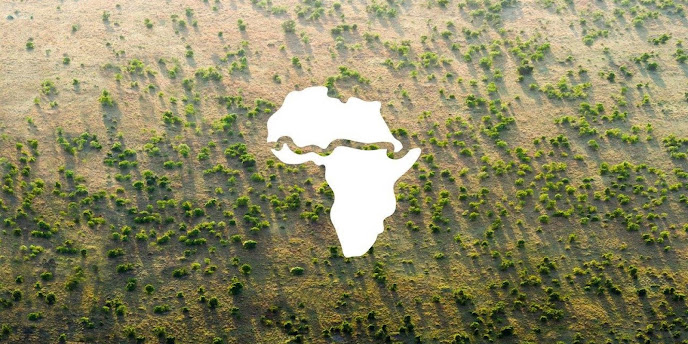Sahel's Rainfall Variability: GHGs Emissions
Greenhouse gases (GHGs) emissions-induced warming not only influences Sahel's rainfall variability indirectly through sea surface temperature, as introduced in the previous blog but also affects Sahel's rainfall variability directly. An increasing number of studies links the partial recovery of Sahel's rainfall and the intensification of extreme precipitation in the Sahel with GHGs-induced warming (such as Dong & Sutton, 2015; Donat et al., 2016; Giannini & Kaplan, 2019).
As mentioned in the last blog, aerosol reduction in the Northern Hemisphere removes the cooling effect and shift the tropical rain belt northward. This impact is also strengthened by the GHGs-induced warming over the Northern Hemisphere (Giannini & Kaplan, 2018). The warming over the African continent also increases Sahel's precipitation. Because GHGs can absorb the longwave radiation reflected by the Earth's surface to space, trap the heat in the atmosphere and then re-emit in all directions, to balance the resulting increase of latent heat flux at the surface, mean precipitation increases (Held & Soden, 2006). Moreover, extreme precipitation is generally associated with the Clausius-Clapeyron relationship in that the saturation water vapour pressure increases with temperature at a rate of 6-7% per Kelvin (Donat et al., 2016). Biasutti & Sobel (2009) also find that the increasing GHGs emissions are in association with the delay of Sahel's rainy season.
Dong & Sutton (2015) also compare the relative dominance of GHG forcing with anthropogenic aerosols and SST in the recent recovery of Sahel's rainfall. They find that the observed recovery of Sahel's rain is mainly influenced by the direct effect of rising GHGs emissions, while the anthropogenic aerosol forcing amplifies it (Figure 1). Although no consensus on this matter has been reached.
 |
| Figure 1. Simulated changes in monsoon indices ( average precipitation over the Sahel between 1996-2010 and 1964-1993) in response to different forcings (SST and SIE: sea surface temperature and sea ice extent; GHG: greenhouse gases concentration; AA: anthropogenic aerosol precursor emissions) normalised by the total response (Dong & Sutton, 2015). |
A more recent attribution study by Herman et al.(2020) compares the observed 20th-century Sahel's July-September precipitation to the single forced CMIP5 model simulations using a 3-tiered multi-model mean (MMM). And their results indicate that the anthropogenic and volcanic aerosols forcings have notable contributions in making the simulated results similar to the observed data. In contrast, GHG forcing basically makes no contribution. Although this does not mean GHGs have no influence on Sahel's rainfall, it is possibly due to the non-linearity of the GHG response or the non-linear interactions with other forcings (Giannini & Kaplan, 2019; Herman et al., 2020).
Herman et al.(2020) also find that only a small portion of observed variance can be explained by external forces. However, the simulated internal variability fails to correlate with the observed residual variance. Another research by Marvel, Biasutti & Bonfils, 2020 also indicates the difficulty of using current models to distinguish the internal variability of Sahel's rainfall with external forcing. This could be a direction for future model development to better understand Sahel' rainfall variability.



Comments
Post a Comment